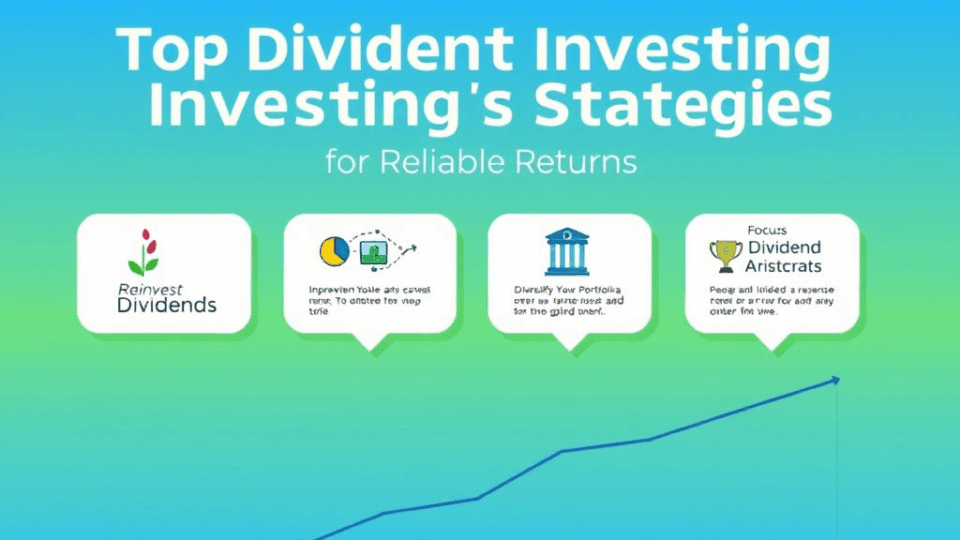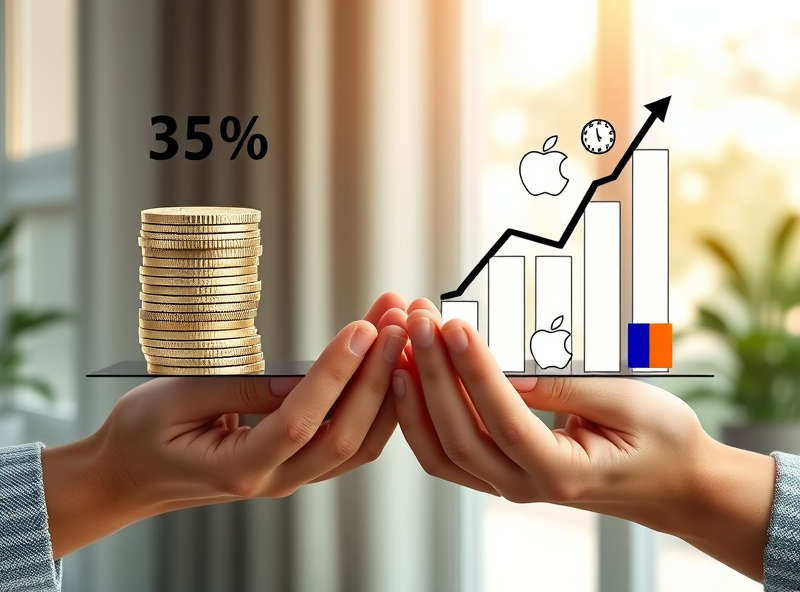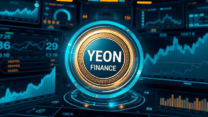
Top Dividend Investing Strategies for Reliable Returns
Blend Growth and High-Yield Dividend Stocks

When it comes to building a dividend portfolio that delivers reliable returns, striking the right balance between growth and high-yield dividend stocks can be a game-changer. Growth stocks often represent companies with strong potential for long-term capital appreciation, while high-yield dividend stocks provide steady income. By blending the two, you can enjoy the best of both worlds—consistent cash flow and portfolio growth.
Here’s why this strategy works so well:
1. Diversification of Income and Growth: Growth stocks may not always pay high dividends, but they tend to increase in value over time. On the other hand, high-yield stocks offer regular income, which can be reinvested to compound returns. Combining both helps cushion your portfolio during market volatility.
2. Risk Management: High-yield stocks can sometimes be riskier if the yield is unsustainably high. Including stable growth stocks balances the risk, ensuring your portfolio isn’t overly dependent on one income source.
3. Inflation Protection: Growth stocks often outperform inflation over the long term, while dividend income can help cover short-term living expenses. This makes the blend ideal for both wealth accumulation and income generation.
4. Reinvestment Opportunities: The dividends from high-yield stocks can be reinvested into growth stocks, creating a powerful compounding effect over time.
To get started, consider allocating a portion of your portfolio to established dividend payers like utility or consumer staple companies, and another portion to tech or healthcare firms with strong growth trajectories. Always review fundamentals like payout ratios, earnings growth, and debt levels before investing.
By thoughtfully blending growth and high-yield dividend stocks, you can build a more resilient and rewarding investment portfolio that supports both your current income needs and future financial goals.
Reinvest Dividends to Maximize Compound Growth

One of the most powerful — yet often overlooked — strategies in dividend investing is reinvesting your dividends. Instead of taking your dividend payouts as cash, reinvesting them allows you to purchase more shares of the same stock or fund. Over time, this simple habit can lead to exponential growth through the magic of compounding.
Let’s break it down: when you reinvest dividends, those new shares also begin to earn dividends. Then those dividends are reinvested again, and the cycle continues. This creates a snowball effect where your investment grows not just from price appreciation, but also from the increasing number of shares you own.
For example, imagine you own a dividend-paying stock that yields 4% annually. If you reinvest those dividends, your total return could significantly outpace a similar investment where dividends are withdrawn. Over 10, 20, or 30 years, the difference can be staggering — potentially doubling or even tripling your long-term returns.
Reinvesting dividends is also a disciplined, automatic way to grow your portfolio without needing to time the market. Many brokerage platforms offer Dividend Reinvestment Plans (DRIPs), which make the process seamless and cost-effective.
So, if you’re looking to build long-term wealth with reliable returns, consider reinvesting your dividends. It’s a simple yet incredibly effective strategy that can make a big difference in your financial future.
Diversify Across Sectors and Regions

When it comes to building a strong dividend portfolio, one of the most important strategies is diversification — not just across different companies, but also across sectors and geographic regions. Why? Because markets can be unpredictable, and economic downturns often affect industries and countries differently. By spreading your investments across various sectors like healthcare, technology, consumer goods, and utilities, you reduce the risk of your entire portfolio being impacted by a single market event.
Similarly, investing in companies from different regions — such as North America, Europe, and emerging markets — helps you tap into global growth opportunities while buffering against localized economic challenges. For example, while one country may face a recession, another might be experiencing rapid growth. This balance can help smooth out your returns over time.
Many high-quality dividend-paying companies operate internationally, offering exposure to global markets with the added benefit of consistent income. Exchange-traded funds (ETFs) and mutual funds focused on global dividend stocks can also be a great way to achieve this kind of diversification without having to pick individual stocks.
In short, diversifying across sectors and regions is a smart, reliable way to build a resilient dividend portfolio that stands the test of time. It’s all about reducing risk while maintaining steady, long-term returns — and that’s a win-win for any investor.
Check Financial Health Before Buying

Before you dive into buying dividend stocks, it’s essential to take a step back and assess the financial health of the company. Think of it like checking the foundation before buying a house — no matter how attractive the dividends may seem, they won’t last if the company isn’t financially stable.
Start by reviewing key financial indicators such as the debt-to-equity ratio, current ratio, and free cash flow. A low debt-to-equity ratio generally means the company isn’t overly reliant on borrowed money, which is a good sign for long-term stability. The current ratio helps you understand if the company can cover its short-term obligations — a ratio above 1 is typically considered healthy.
Free cash flow is another critical metric. It shows how much cash a company has left after capital expenditures, which is what it can use to pay dividends. If a company consistently generates strong free cash flow, it’s more likely to maintain or even grow its dividend payouts.
Also, take a look at the dividend payout ratio. This tells you what percentage of earnings are being paid out as dividends. A payout ratio that’s too high (typically over 80%) might indicate that the dividend is unsustainable, especially during economic downturns.
By doing this due diligence, you not only protect your investment but also increase your chances of enjoying reliable, long-term returns. Remember, strong dividends come from strong companies. A little homework now can lead to a lot of peace of mind later.








답글 남기기